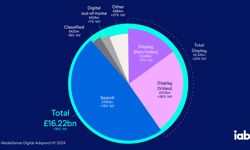
Q: How is tech changing the way publishers sell advertising?
A: Mobile technology, and the widespread adoption of web standards has pushed the limits on what can be achieved on just about any device, without needing to be tied to a desk. With the right tools, cross-platform campaigns can be iteratively created in front of, and with direct input from the clients themselves. Campaigns can be sold, scheduled, and managed, all without having to return to the office. The whole process can be linked together, from initial sale, to delivery, to post-sale, to provide a holistic view of the whole process, whilst automatically keeping all stakeholders updated at each step.
Advances in data analytics provide information and insights, the likes of which were out of most organisations’ reach just a few years ago. Technology is now enabling the integration of external real-time data sets with data already held within existing systems far more cost-effectively than ever before. This augmented data can be used effectively by senior management and sales professionals alike to derive new opportunities and achieve greater levels of efficiency than have previously been possible.
Q: What benefits can automation bring to the ad sales process?
A: There is a saying in software development, that if you need to do something more than once, automate it. The premise is that your brain is too valuable for solving new and interesting problems to be concerned with boring repetitive ones. In the information economy, I believe this is true in any sector, and advertising media sales is no exception.
My first job was in programming robots and building automation systems for manufacturing companies. The huge cost, quality, and efficiency benefits of automation in manufacturing were obvious, and we can’t imagine a manufacturing environment that doesn’t depend on high levels of automation today. Whilst technology automatically delivers a degree of automation, I’m still amazed at how many working practices I see where there are repetitive, manual steps that could be eradicated.
There are so many individual actions that need to be completed as part of the whole advertising sales process, that the opportunities for improving levels of automation are almost limitless. Irrespective of how much you might be automating right now, continued advances in technology mean there are always fresh opportunities to re-assess where more could be done. At the most basic, things like reminders of contact points with long standing clients can be automatically derived from historic patterns and current campaign schedules. These can then be routed to the most appropriate individual to action. Updates to sales professionals and clients can be triggered automatically at key steps in the campaign life-cycle. Hooks into your data providers can automatically deliver cleansed contact data, as well as new prospects to your sales professionals. Integration and automation between systems in the sales, delivery, and reporting processes can greatly improve the efficiency and accuracy of the overall workflow too.
Q: What role can AI play in optimising publishers’ commercial offering?
A: The application of pattern matching, and general AI principles to the data commonly held in commercial systems is of particular interest to me. From a sales person’s perspective, I can see it playing a significant role in decision support during the sales process, by providing more intelligent upsell and additional / alternative options, and suggestions. At the reporting level, we’re already seeing promising results in AI’s ability to be able to provide automatic identification of trends and patterns that can be delivered alongside more traditional reports. I can also envisage it being used to simplify the process for consumers using self-service advertising portals by identifying the most likely and effective options for positioning their adverts based purely on the text of them.
Q: How can publishers win back some of the digital ad spend that now goes to Google and Facebook?
A: That’s a really tough one, but I don’t think we can look at it as a simple binary option of the revenue either going to Google or coming to a publisher. The reality is that the likes of Google and Facebook have opened up advertising channels and platforms, that traditional publishers can’t compete directly with, but can make use of. For any advertiser to achieve maximum exposure, they need to ensure that their campaign is run across multiple channels and platforms. The key for publishers is in ensuring that the value proposition they present, and the ROI they offer is compelling. In a highly competitive market, you need to ensure that you are operating as efficiently as possible, whilst delivering great customer service. That’s where the application of the right technologies and systems is key.
Q: In terms of ad sales management processes, are there any quick wins publishers can do today to make their systems more efficient?
A: I would say that most publishers probably don’t realise how much valuable information is held in the multiple, disparate systems they use to run the day to day operations of their business. Bringing that data together and being able to holistically ask questions of it can yield fantastic new insights into the operation of the sales process, and the opportunities and areas where they might seek efficiencies. Traditionally, this kind of project has required significant budget and technical expertise, but there are tools available now that can greatly simplify the process of getting at the data, collating it, and reporting on it.
Sticking with the theme of data, the information held in your CRM system is key to the sales management process. Making sure that is as accurate, and complete as possible is essential. If it isn’t actively maintained, over time, it becomes stale. It’s always worth reviewing how, and who is responsible for maintaining records, removing redundant records, loading new records into the system, and how frequently this is done. The ideal scenario is to have this automated, so that all customer records are periodically analysed and cleansed, with an exceptions report generated for those that require further evaluation.
Q: What will be the big tech advances, in terms of media, in the next five years?
A: I’ve worked in the technology industry long enough to know that you’re very rarely right, when trying to predict what the next big thing will be!
That said, I believe there are exciting opportunities for applying artificial intelligence and machine learning to the data sets publishers hold. The toolkits required to achieve this efficiently and cost effectively are developing at pace, and I think that the application of these principles will help drive more accurate, smart, and predictive systems, that are able to better support managers and sales people than can be achieved right now.
I also see a lot of promise in blockchain technology. Whilst it’s currently synonymous with crypto currency, the underlying technologies involved offer interesting alternative use cases. One potential they have, is in delivering on a global, de-centralised, micro-payments system that could be used by publishers to derive revenue from content views without the need for a paywall, or intrusive payment systems.










